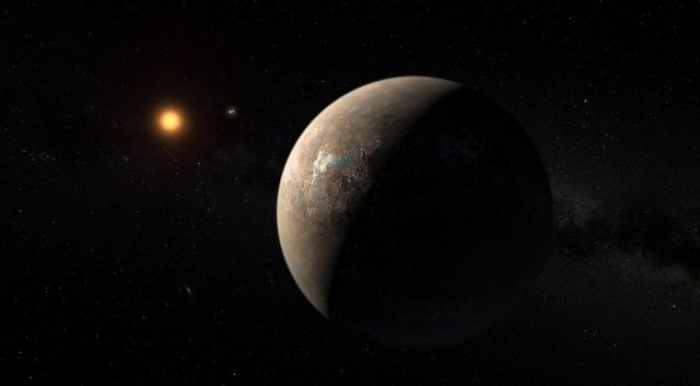The basic outline of this mission was presented in mid-December at American Geophysical Union conference in New Orleans. JPL’s Anthony Freeman called the plan “nebulous,” noting that the mission doesn’t even have a name yet. The goal is to launch the as-yet theoretical probe in 2069, the one-hundred year anniversary of the moon landing. The design of the craft, launch vehicle, and propulsion system all remain unknowns.
The Centauri system is the obvious choice for a target as it’s the closest to Earth. The triple-star system lies just over four light years away. The larger Alpha Centauri A and B are a binary system, with the red dwarf Proxima Centauri orbiting them. We know of at least one exoplanet in that direction orbiting Proxima Centauri. That planet, Proxima b, was discovered in 2016, but there could be more planets we can’t see yet. By the time the interstellar mission launches, we’ll probably have a much better idea what’s out there thanks to instruments like the James Webb Space Telescope.
A distance of four light years isn’t far on a galactic scale, but it’s a huge distance for any current method of propulsion. Even the New Horizons probe, the fastest deep space mission ever launched at more than 36,000 miles per hour (58,000 kilometers per hour), would take around 80,000 years to reach Proxima Centauri. Clearly, we need something faster. The NASA team has set the goal of reaching 10 percent the speed of light — 67 million miles per hour (107 million kilometers per hour).
JPL researchers are considering a number of propulsion technologies that have been on the drawing board for years including tiny probes with giant laser-propelled sails and matter-antimatter engines. Some of these ideas have the potential to reach as much as a quarter the speed of light. The Breakthrough Starshot initiative is another idea for hitting up to 20% the speed of light using ultra-tiny vehicles.
Even at these unfathomable speeds, it would take decades to reach another star, and the entire mission needs to be automated. Earth is too distant to control the mission (it takes years for a signal to reach Proxima Centauri), so the probe needs to know how to respond to every eventuality on its own.
More about: #NASA
















































